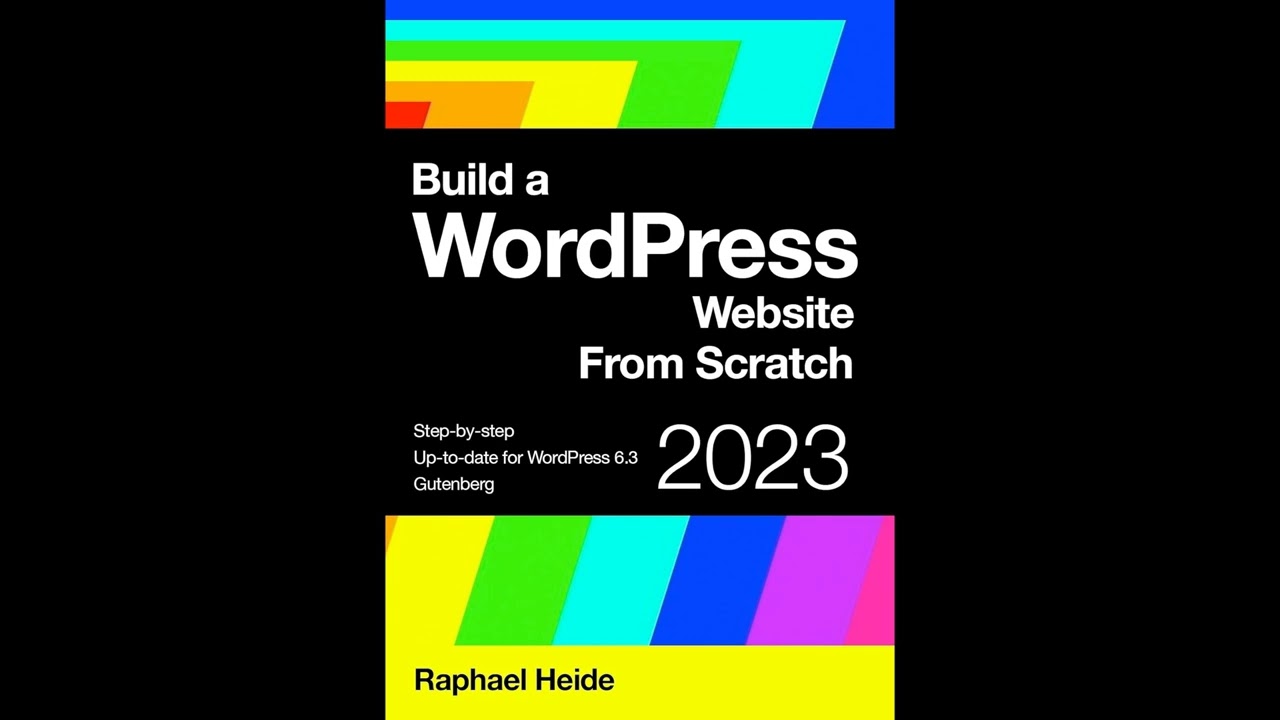Blog
Raphael Heide – Build a WordPress Website From Scratch 2023

Unleashing Your Digital Creativity: A Step-by-Step Guide to Building a WordPress Website from Scratch in 2023
In today’s digital age, having a website is crucial for personal branding, businesses, and creative endeavors. WordPress, renowned for its flexibility and user-friendly interface, emerges as one of the most popular platforms for building websites. This guide will walk you through the essential steps to create a WordPress website from the ground up in 2023.
Understanding WordPress: A Brief Overview
WordPress powers over 40% of all websites on the internet, offering extensive customization options for users of all skill levels. It operates on an open-source platform, making it a cost-effective choice for blogs, portfolios, e-commerce sites, and more. With thousands of themes and plugins available, WordPress enables you to construct a unique online presence tailored to your needs.
Step 1: Planning Your Website
Before jumping into the technical aspects, take a moment to define your website’s purpose. Ask yourself:
- What is the primary goal of my website? (blog, portfolio, e-commerce)
- Who is my target audience?
- What content will I feature?
Having clear answers will guide your design and development choices. Sketch a rough layout of your site, designating areas for menus, content, and visuals.
Step 2: Choosing a Domain Name and Hosting
Your domain name is your online address, so choose wisely. It should reflect your brand and be easy to remember. Once you’ve settled on a name, register it through a domain registrar. Popular options include GoDaddy and Namecheap.
Next, select a hosting provider. Hosting is crucial for your website’s performance and uptime. Consider reputable providers like Bluehost, SiteGround, or A2 Hosting, which often offer one-click WordPress installation. Check for customer support, uptime guarantees, and scalability options.
Step 3: Installing WordPress
After securing your domain and hosting, it’s time to install WordPress. Most hosting providers offer a simple installation process:
- Log into your hosting account.
- Navigate to the control panel (cPanel).
- Look for the WordPress installer, typically under the "Website" or "Software" section.
- Follow the prompts to install WordPress, including selecting your domain and site title.
Step 4: Selecting a Theme
Your website’s theme dictates its appearance and layout. WordPress offers thousands of free and premium themes. To select a theme:
- Navigate to Appearance > Themes in your WordPress dashboard.
- Click Add New and browse the available options.
- Use filters to narrow down by features like layout or functionality.
Once you’ve found a theme that resonates with your vision, click Install and then Activate to set it live.
Step 5: Customizing Your Website
Customization is where your website truly starts to reflect your brand identity.
Site Identity
In the Customization section, focus on site identity. Upload a logo, choose a site title, and set a tagline that encapsulates your mission.
Menus
Create a user-friendly navigation menu:
- Go to Appearance > Menus.
- Select the pages you want to include (e.g., Home, About, Services).
- Arrange the items and assign your menu to a display location (header, footer).
Widgets
Enhance your site’s functionality with widgets. Widgets add content to specific areas of your site, like sidebars or footers. Go to Appearance > Widgets to drag and drop your desired widgets.
Colors and Fonts
You can adjust colors and fonts to align with your branding. Many themes allow for easy modifications through the Customizer or theme settings.
Step 6: Creating Content
Now, it’s time to populate your website with engaging content. Start with essential pages:
- Home: A welcoming introduction and overview of what visitors can expect.
- About: Share your story, mission, and values.
- Services/Products: Detail the offerings, along with pricing or downloadable resources.
- Contact: Provide methods for visitors to get in touch, like a contact form or social media links.
Step 7: Enhancing Functionality with Plugins
Plugins extend your site’s capabilities. Essential plugins for most websites include:
- SEO Plugins: Tools like Yoast SEO or Rank Math help optimize your content for search engines.
- Security Plugins: Install security plugins like Wordfence to safeguard your site.
- Caching Plugins: Improve site speed with plugins like W3 Total Cache or WP Super Cache.
- Contact Forms: Use plugins like Contact Form 7 to create user-friendly forms.
To install plugins, navigate to Plugins > Add New, search for the desired plugin, and click Install Now followed by Activate.
Step 8: Optimizing for SEO
Search Engine Optimization (SEO) is essential for driving organic traffic to your site. Here are key strategies:
- Keywords: Research keywords relevant to your content and integrate them naturally throughout your posts.
- Meta Descriptions: Write compelling meta descriptions for pages and posts, summarizing their content effectively.
- Alt Text: Always add alt text to images to improve accessibility and SEO.
Step 9: Launching Your Website
After finalizing your content and optimizing your website, it’s time to go live. Review each page to ensure everything functions as intended. Check for:
- Broken links
- Typos or grammatical errors
- Mobile responsiveness
Once you’re satisfied, announce your launch through email or social media to attract visitors.
Step 10: Regular Maintenance and Updates
Sustaining your website requires ongoing attention. Regularly update WordPress, themes, and plugins to enhance security and features. Additionally, back up your website regularly using plugins like UpdraftPlus or BackupBuddy.
Monitor your website’s performance using analytics tools like Google Analytics. Track visitor behavior to refine your content strategy and improve user experience.
Conclusion
Building a WordPress website from scratch in 2023 is an achievable task that opens doors to endless possibilities. By following these steps, from planning to ongoing maintenance, you can create a beautiful and functional online presence. Embrace the journey of web development, knowing that every tweak and update brings you closer to your digital goals.

